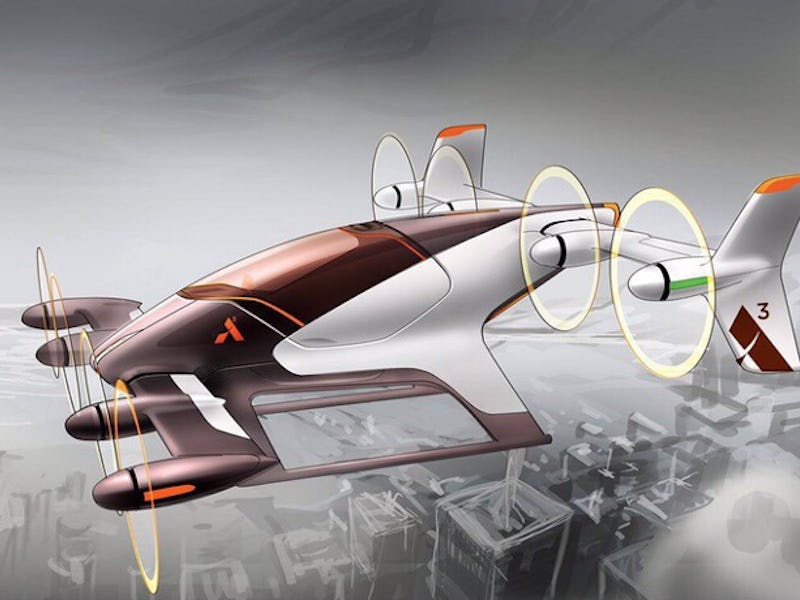Even as self-driving cars become more and more ubiquitous, there’s one problem that Silicon Valley hasn’t solved: the traffic jam. But Airbus Group, a U.S. aeronautics and space company, thinks that it has a solution. The company’s Silicon Valley branch recently announced it’s been working on a secret project titled “Vahana,” an autonomous flying vehicle that can be used for both passenger and cargo transport.
Airbus’s flying taxi resembles a drone in design, and would use multiple propellers to travel medium-length distances, like between an airport and city center. Developers in France and Germany are working on an electrically operated platform that would allow the flying taxi to carry multiple passengers at once between city destinations. Currently, no countries allow completely autonomous aerial vehicles, so the vehicle would initially be manned by a pilot.
By 2030, 60 percent of the world’s population will live in cities, making transportation infrastructure an increasingly important part of urban planning. Flight tests of the first Vahana prototype are slated for the end of 2017, with hopes of bringing the product to consumers by 2020. That’s about a decade sooner than another future-travel system — Hyperloop One — plans on launching.
“I’m no big fan of Star Wars, but it’s not crazy to imagine that one day our big cities will have flying cars making their way along roads in the sky,” says Airbus Group CEO Tom Enders. “In a not too distant future, we’ll use our smartphones to book a fully automated flying taxi that will land outside our front door – without any pilot.”
An artist rendering of the future Air Bus
But before you get too excited about beating rush-hour traffic, it’s worth noting the company has a lot of technological kinks to work out before the product is ready to test. The same sensor technology that allows self-driving cars to avoid accidents doesn’t exist for aerial vehicles.
Airbus isn’t the only company trying to get in the autonomous air transportation game. There are a number of cargo drone companies on the market and the Ehang 184, a Chinese passenger drone, began flight testing in June.
